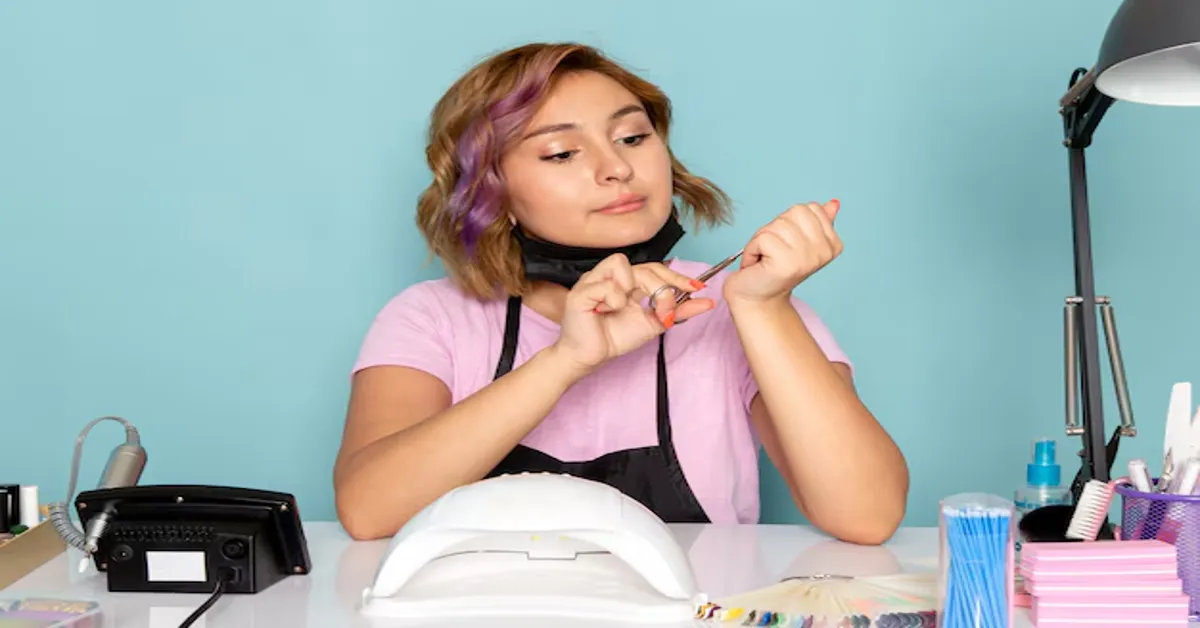In the world of nail enhancements, builder gel has become a game-changer for those seeking strong, durable, and natural-looking nails. Whether you’re a nail technician or a DIY enthusiast, understanding how builder gel works can help you achieve salon-quality results at home.
This guide will walk you through everything you need to know about builder gel, including its benefits, application process, maintenance, and removal tips. By the end, you’ll be equipped with all the knowledge you need to create long-lasting, stunning nails.
1. What is Builder Gel?
Builder gel is a thicker, stronger gel formula used to create nail enhancements. Unlike regular gel polish, gel provides extra strength and structure, making it ideal for extending nail length and reinforcing weak or brittle nails.
Key Features:
- Self-leveling formula for a smooth application
- Can be used on natural nails, tips, or forms
- Stronger than regular gel polish
- Cures under UV or LED lamps
- Offers a natural, glossy finish
2. Types of Builder Gel
The gel comes in various formulations to suit different needs:
A. Hard Gel
- Highly durable and used for sculpting nail extensions.
- Requires filing for removal (not soak-off).
- Perfect for long, strong enhancements.
B. Soft Gel (Soak-Off Builder Gel)
- Flexible and easier to remove.
- Ideal for strengthening natural nails.
- Works best for short to medium-length nails.
C. Brush-On Gel
- Comes in a bottle with a brush applicator.
- Beginner-friendly and easy to apply.
- Great for a quick strengthening layer.
D. Clear vs. Tinted Gel
- Clear builder gel is versatile for layering and nail art.
- Tinted builder gel (nude, pink, milky white) enhances the natural look.
3. Benefits of Using Builder Gel
Why should you choose gel for your nails? Here are some standout benefits:
✅ Strengthens natural nails – Prevents breakage and chipping. ✅ Long-lasting wear – Can last 3-4 weeks with proper care. ✅ Lightweight feel – More natural than acrylics. ✅ Odor-free – Unlike acrylics, builder gel has no strong smell. ✅ Customizable thickness – Can be applied in layers for desired strength. ✅ Does not damage natural nails (if applied and removed correctly).
4. Builder Gel vs. Acrylics vs. Polygel
Many people wonder how gel compares to other nail enhancement options. Here’s a quick comparison:
| Feature | Builder Gel | Acrylic Nails | Polygel |
|---|---|---|---|
| Durability | Strong | Very strong | Strong |
| Flexibility | More flexible | Hard and rigid | Medium |
| Removal | Soak-off (soft gel) or file-off (hard gel) | Filed off | Filed off or soak-off |
| Odor | No strong odor | Strong odor | Minimal odor |
| Application | Brush-on, self-leveling | Uses liquid monomer & powder | Tube application, then sculpted |
| Best for | Strengthening, overlays, extensions | Long extensions, heavy-duty wear | Extensions, lightweight feel |
5. How to Apply Builder Gel: Step-by-Step Guide
Step 1: Prepare Your Nails
- Remove any old polish.
- File and shape your nails.
- Push back and trim cuticles.
- Buff the nail surface for better adhesion.
- Wipe nails with alcohol or acetone to remove oils.
Step 2: Apply a Base Coat
- Use a gel base coat and cure under a UV/LED lamp for 30-60 seconds.
Step 3: Apply Builder Gel
- Using a brush, apply a thin layer of gel.
- Cure under a UV/LED lamp for 60 seconds.
- Add another layer if needed for extra strength.
Step 4: Shape and Buff
- Once fully cured, shape and buff the nails for a smooth finish.
Step 5: Apply Top Coat
- Seal with a gel top coat and cure for another 60 seconds.
6. Best Practices for Maintaining Builder Gel Nails
To keep your gel nails looking flawless:
✔ Moisturize cuticles daily with cuticle oil. ✔ Wear gloves when cleaning or using chemicals. ✔ Avoid using nails as tools to prevent lifting. ✔ Schedule refills every 2-3 weeks to maintain strength.
7. How to Remove Builder Gel Safely
🔹 For Soak-Off Gel:
- Buff off the top coat.
- Soak nails in acetone for 10-15 minutes.
- Gently push off the softened gel with an orange stick.
🔹 For Hard Gel:
- File down with an electric nail drill or manual file.
- Avoid over-filing to protect the natural nail.
8. Common Mistakes to Avoid When Using Gel
🚫 Applying too much gel at once – Leads to uneven curing and lifting. 🚫 Skipping nail prep – Oils and moisture can prevent proper adhesion. 🚫 Not curing properly – Ensure your lamp is powerful enough. 🚫 Over-filing natural nails – Can cause thinning and damage.
9. Top Brands for Builder Gel
If you’re looking for the best gel brands, consider these top-rated options:
🔥 IBD Gel – Trusted by professionals. 🔥 Gelish Gel – Easy to apply and long-lasting. 🔥 Orly Builder in a Bottle – Great for beginners. 🔥 Young Nails Synergy Gel – High-quality and durable. 🔥 Mia Secret Gel – Affordable and reliable.
10. Conclusion & Call-to-Action
Builder gel is an excellent choice for strong, durable, and beautiful nails. Whether you’re a beginner or an experienced nail tech, mastering builder gel techniques can elevate your nail game.
Frequently Asked Questions (FAQs)
1. Can you use builder gel on natural nails?
Yes! It strengthens weak nails without requiring extensions.
2. How long does gel last?
With proper care, gel lasts 3-4 weeks.
3. Can I paint over gel with regular nail polish?
Yes, but always use a top coat to protect the surface.
4. Does builder gel damage nails?
Not if applied and removed correctly.
5. Can I use gel without a base coat?
A base coat is recommended for better adhesion and longevity.
💡 Want more nail care tips? Subscribe to our newsletter and stay updated on the latest trends!









